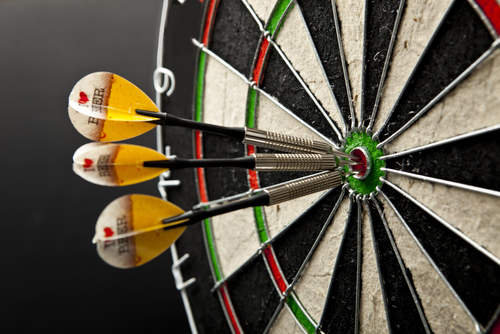
How Understanding the Sales Funnel Helps Marketers Do Their Job Better
October 13, 2014
By Matt Farber

Sales complains that marketing isn’t giving them the leads they need. Marketing is working overtime to score leads and provide sales with leads they believe have the highest chance of closing. So what’s missing? Why are these two seemingly compatible departments experiencing communication and expectation friction? In order to solve this both sides need to understand where the disconnect is happening so that the problem can be solved. One big step in the right direction is sit down and discuss the sales funnel.
Since there are so many ways to define a sales lead, the word “lead” can mean many different things. Tack on other, new terminology popping up in marketing and both departments become confused. This discrepancy lies at the heart of many sales and marketing alignment issues and fuels countless debates about lead quality. By understanding and agreeing upon the sales funnel terminology and qualifications within it, sales and marketing teams can translate expectations into a common language.
Let’s start by breaking down the funnel into common terms at each stage within the sales process.
Marketing says “Attract”. Sales says “Prospects/Discovery”.
This is stage of the buying process when a prospect is actively searching for a solution to their problem. Through inbound marketing strategies, such as blogging, prospects are enticed and pulled into your company’s website. Understanding that prospects are actively searching for a solution gives you insight about what types of content to create. While most of the content will not be about the product or service you offer, it will revolve around educating them on your industry and the best options available to them. Remember, these visitors to your site are not ready to buy. They are researching. If you happen to obtain information on these prospects, it is not time to send them to sales. Sales can virtually do nothing with them.
Marketing says “Convert”. Sales says “Lead/Solution Identification”.
The convert stage is critical to letting sales reps close more deals. Once you’ve attracted prospects to your site, you also need to ensure that there are ways for the prospect to convert into a lead. This can be done through a white paper, ebook, tip sheet, checklist, or any other valuable content asset your persona needs to help solve their problem. (Don’t forget to create content at all stages of the marketing funnel: Awareness, Consideration, and Intent). Even more important for this stage is the forms used to capture the prospects information. (Remember: Not everyone that fills out a form will be a true lead in sales' eyes. This means that not every person that fills out a form should be given to sales). Talk to sales - what key information do you need from a prospect? The answers to these questions will be the form fields required to fill out before the content asset is downloaded. Once you start getting leads in the door, you can begin nurturing those leads to the next, perhaps most important, stage of the funnel.
Marketing says “Close”. Sales says “MQL/Solution Evaluation”.
Typically at this stage marketers are tracking “Demo” or “Consultation” requests. It’s at this stage where the marriage of sales and marketing should shine to most. You’ve already done a good amount of work; you’ve created content to attract visitors; you’re converting leads with valuable assets behind forms, and you’re nurturing your leads to understand more about your product or service and why it is a good fit for them. When marketers receive the notifications that someone has entered the Close stage, many will automatically forward that lead to sales - but there is still information you can and should leverage for this stage before taking that next step.
First. find out from sales what characteristics accompany a qualified lead, then collect, organize and find patterns within the information you’ve collected about your leads. You might also consider lead scoring. This is important because not every single lead is created equal; furthermore, not every single lead will be of value to your sales team. For example, simply because someone fills out a “Demo” or “Consultation” request, it does not mean that they are necessarily a qualified lead. The company might be too small for your business, or may not be in the correct industry. With proper communication and attention to lead details, you will be able to send the most qualified leads to sales.
Other Stages of the Sales Funnel
There are other stages of the sales funnel that marketing doesn’t always have insight into once the lead is passed on to sales. The following are the most common after MQL:
- SQLs (Sales Qualified Leads)
- Opportunity
- Price Negotiation
- Cusotmer
Note: Not all sales process are uniform across industries. It is extremely important to have a meeting with your sales team to identify which process they are using and where marketing can help them most. The above is an example of a typical sales funnel, but may vary from what your company has implemented.
What next steps are you going to take to ensure leads sent to sales are the most qualified? Let us know by tweeting us at @smartbugmedia.

About the author
Matt Farber was formerly an Inbound Marketing Consultant for SmartBug Media. Using his project management and inbound marketing experience in the B2B sector Matt helps clients build and implement their inbound marketing strategies to grow leads, conversion and revenue. Read more articles by Matt Farber.









